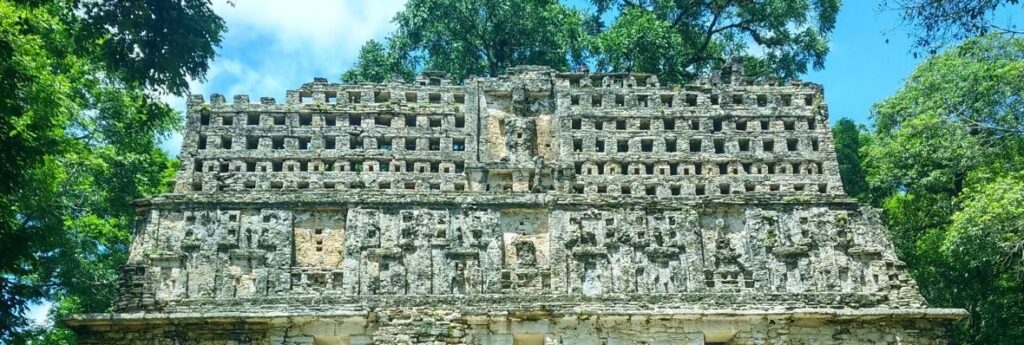Mexico’s government has acknowledged that at least two well-known Mayan ruin sites in the southern part of the country are unreachable by visitors because of a toxic mix of cartel violence and land disputes.
But two tourist guides in state of Chiapas, near the border with Guatemala, say two other sites that the government claims are still open to visitors can only be reached by passing though drug gang checkpoints.
The explosion of drug cartel violence in Chiapas since last year has left the Yaxchilán ruin site completely cut off, the government conceded last week.
The tour guides, who spoke on condition of anonymity because they must still work in the area, said that gunmen and checkpoints are often seen on the road to another site, Bonampak, famous for its murals.
They say that to get to yet another archaeological site, Lagartero, travellers are forced to hand over identification and cellphones at cartel checkpoints.
Meanwhile, officials concede that visitors also can’t go to the imposing, towering pyramids at Tonina, because a landowner has shut off crossing his land while seeking payment from the government for granting the right of way.
The cartel-related dangers are the most problematic. The two cartels warring over the area’s lucrative drug and migrant smuggling routes set up the checkpoints to detect any movement by their rivals.
Though no tourist has been harmed so far, and the government claims the sites are safe, many guides no longer take tour groups there.
“It’s as if you told me to go to the Gaza Strip, right?” said one of the guides.
“They demand your identification, to see if you’re a local resident,” he said, describing an almost permanent gang checkpoint on the road to Lagartero, a Mayan pyramid complex that is surrounded by pristine, turquoise jungle lagoons.
“They take your cellphone and demand your sign-in code, and then they look through your conversations to see if you belong to some other gang,” he said. “At any given time, a rival group could show up and start a gunbattle.”
The government seems unconcerned, and there is even anger that anyone would suggest there is a problem, in line with President Andrés Manuel López Obrador’s policy of playing down gang violence – even as the cartels take over more territory in Mexico.
“Bonampak and Lagartero are open to the public,” the National Institute of Anthropology and History said in a statement.
“It is false, biased and irresponsible to say that these archaeological sites are in danger from drug traffickers,” added the agency, known as the INAH, which claimed it “retains control of the sites.”
Both guides stressed that the best-known Mayan ruin site in Chiapas, the imposing temple complex at Palenque, is open and perfectly safe for visitors. But starting around December, tourists have cancelled about 5% of trips booked to the area, and there are fears that could grow.
Things that some tourists once enjoyed – like the more adventurous trip to ruins buried deep in the jungle, like Yaxchilán, on the banks of the Usumacinta river and reachable only by boat – are either no longer possible, or so risky that several guides have publicly announced they won’t take tourists there.
Residents of the town of Frontera Comalapa, where the boats once picked up tourists to take them to Yaxchilan, closed the road in October because of constant incursions by gunmen.
Even the INAH admits there is no access to Yaxchilan, noting that “the institute itself has recommended at certain points that tourists not go to the archaeological site, because they could have an unsuccessful visit.” But it said that the problems there are “of a social nature” and are beyond its control.
The guide said the ruin sites have the added disadvantage of being in jungle areas where the cartels have carved out at least four clandestine landing strips to fly drugs in from South America.
But the damages are mounting for the Indigenous residents who have come to depend on tourism.
“There are communities that sell handicrafts, that provide places to stay, boat trips, craftspeople. It affects the economy a lot,” said the first guide. “You have to remember that this is an agricultural state that has no industry, no factories, so tourism has become an economic lever, one of the few sources of work.”

